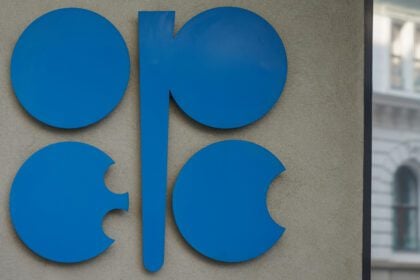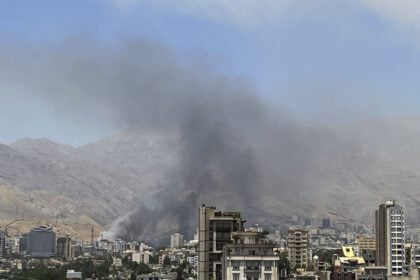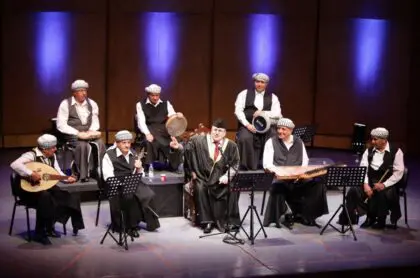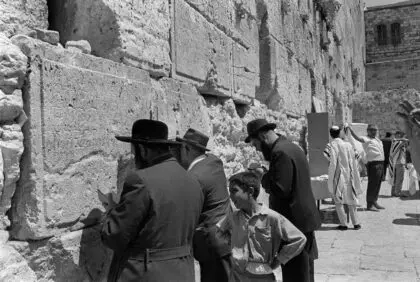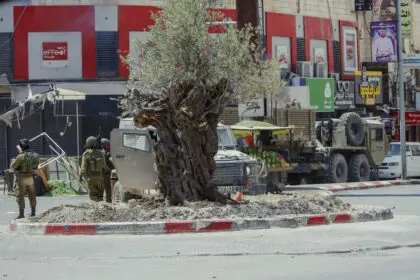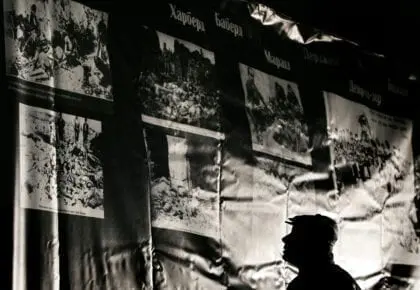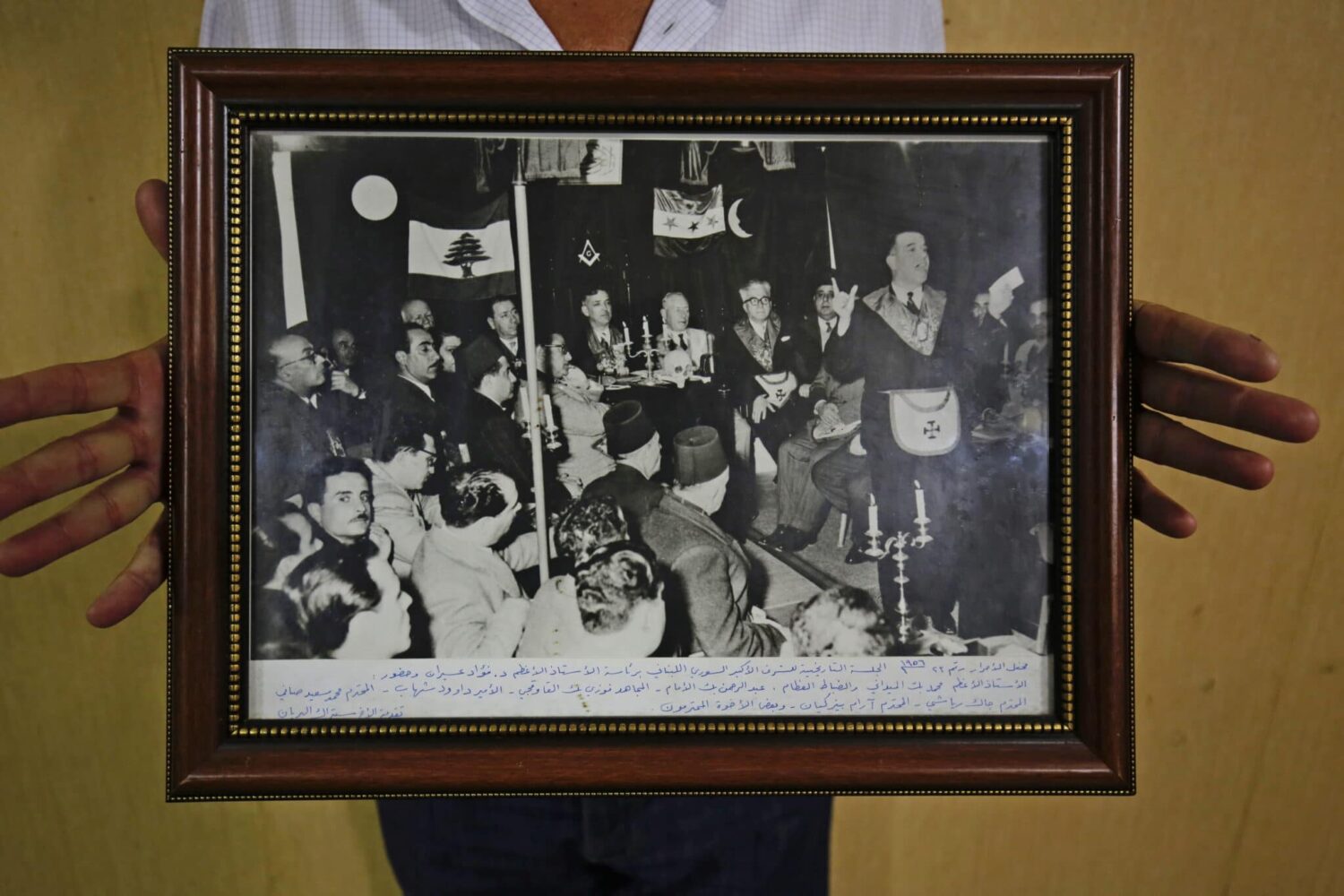
Introduction
In modern times, through a combination of factors Lebanon developed into one of the most important economic and politico-cultural centers in the Arab world. The Civil War which erupted in 1975 brought this development to an end.
Clans and Communities
Lebanon’s somewhat peculiar political system – the President has to be a Maronite, the Prime Minister a Sunni, the Speaker of Parliament a Shiite, the Minister of Defence a Druze, and the parliamentary seats are divided along (religious) community lines, which today often also run along political lines – draws attention to the importance of these communities. In the same vein, each of the eighteen recognized religious denominations has its own laws and courts regarding matters of personal statuses, such as marriage and divorce, and inheritance. This means that everyone has to be registered with one of these communities.
The Lebanese mixture of cultures is one of the characteristics of the country. As long as they have been accessible, the Lebanese mountains have been a refuge for minorities persecuted elsewhere. These different groups lived in relative harmony for centuries. In the 19th and 20th centuries – partly because of the international situation – tensions grew, eventually leading to clashes and even civil wars.
In the mountain communities, certain families had acquired a leading role. Many of these dynasties still exist and provide today’s political leaders – who, as a negative consequence, are sometimes accused of ‘clientelism’.
Other Groups
Officially, there are over 400,000 registered Palestinian refugees in Lebanon, plus an unknown number who are not registered. But it is mostly thought that the real number of Palestinian refugees in Lebanon is smaller than the registered number, as many have left the country. Their presence – especially that of armed groups – has caused tensions with the Lebanese, but the refugees also contribute to the economy, by working mostly as seasonal, cheap workers in orchards or on building sites.
It is not known how many people with other nationalities live in Lebanon, as there are many illegal immigrants. There are said to be thousands of Syrians, but officially, they number only a few hundred.
Imbalances
Lebanon is marked by huge social differences between communities and regions. For instance, the overall adult literacy rate is very high (91 percent for men, 92 percent for women), but in the southern town of Sidon, 35 percent of the population cannot read or write.
A fraction of the population is extremely rich. In the 1960s, 4 percent of the population shared one-third of the national income, whereas half of the population had to share less than one-fifth. Even nowadays there are huge differences in income. One out of four people lives under the poverty line (less than 1 USD per person per day) and one out of 12.5 lives in extreme poverty and cannot even provide for his basic needs.
There is a huge disparity in the distribution of poverty with a heavy concentration in certain regions. Hermel, Baalbek, and Akkar witness the highest poverty rates, Beirut the lowest (0.7 percent). On the other hand, some made a fortune – in particular in the real estate business – as a result of the reconstruction program after the Civil War and the low-income taxes.

Geographical age distribution
The geographical age distribution follows that of income and literacy: the younger the population, the poorer and less educated. The more peripheral districts are notably younger than Beirut and Mount Lebanon. Noteworthy is that the male/female ratio average drops suddenly from 104.4 for the age group of 15-14 to 92.3 for the 25-29-year-olds, and it remains low even up to the 65-year-old age group. One explanation for this sudden drop may be the emigration of young persons (see Youth).
Imbalances
Not counted among the Lebanese are the 400,000 Palestinian refugees (and possibly many more illegal Palestinians), who enjoy no civil rights and often live in dire circumstances. Unemployment is extremely high among them. Those who do have jobs, are often employed as seasonal workers in the agricultural sector or as builders.
Quite another form of imbalance is the military status of Hezbollah, the only political party that has not disarmed after the Civil War, not even after the departure of the Israeli and Syrian occupants in, respectively, 2000 and 2006. Public opinion is divided on this subject.
Crime
The crime rate in Lebanon is moderate. Early 2010, Lebanon’s Internal Security Forces released a statement saying crime had decreased in the previous year. However, the statement also said that theft incidents and robberies had increased in 2009 compared to 2008. In 2006 (last UN International Homicide Data survey) there were 6.5 homicides per 100,000 inhabitants.
Both car theft and home break-ins occur, and car thefts seem to be on the rise, as is purse snatching. Another endemic problem is cannabis cultivation in the Beqaa Valley. Violent crime and sexual assaults are rare though. In 2007, there were 34,595 arrested persons and prisoners in the prisons of Lebanon of whom 88.6 percent were males.
Political murders and acts of politically motivated violence occur rather frequently. Most prominent political families – or families of newspaper owners – have suffered at least one murder victim. More often than not, these murders remain unsolved.
Social Protection
Less than half of Lebanon’s population benefits from at least one type of health insurance (44.9 percent), while 53.3 percent of Lebanese residents go without any sort of health insurance. Of those who do have health insurance, almost a quarter (23.4 percent) are covered by the National Social Security Fund (CNSS), 9.0 percent by health services provided by the Army and the Internal Security Forces, and 4.3 percent by the Civil Servants’ Cooperative.
Maternity leave is seven weeks, on full pay, and is remunerated by social security networks and the employer. The laws concerning sick leave benefits have not yet been implemented.
There is an old-age benefit, consisting of a lump sum for those who reach the age of 64 and have been employed for at least twenty years in the industry, commerce, or agriculture. There is no old age benefit for temporary workers or the self-employed.
There are also survivor benefits (if the deceased was covered by this insurance) and disability benefits (50 percent of the last salary, if certain conditions are met). Employees may take part in an insurance scheme covering medical costs (and sometimes their families). Civil servants and teachers have their own social security system, which is more favorable than the general system. (See also Legal framework)
Family Structure
Most households are made up of four (19.7 percent) or five (18.5 percent) persons. The percentage of households made up of seven or more persons is 12.6 percent, and the percentage of single-person households is 7.3 percent. 41.9 percent of the latter are elderly people, and most of these are women.
The overall average household size in Lebanon has declined from 5.4 individuals per household in 1970, and 4.8 individuals in 1997, to 4.3 individuals in 2004. 85.8 percent of households have a male head of household, and 14.2 percent of households are headed by women. Deprivation rates are higher among the latter.
One of the recent demographic trends in Lebanon is that both males and females tend to marry at a later age. A comparison of the years 1970, 1997 and 2004, for the whole of Lebanon, reveals that the unmarried percentage has almost doubled in this period. This applies more to females than to males.
There are discrepancies between regions. The percentage of unmarried people between 25 and 29 is significantly higher in Beirut than in the peripheral regions. In North Lebanon, 59.5 percent of young men within this age bracket are unmarried, compared to 78.7 percent in Beirut. For women in that age group, the discrepancy is even larger: 30.6 percent are unmarried in Nabatieh, 62.9 percent in Beirut.
Position of Women
The Lebanese Constitution (Article 7) affirms gender equality: ‘All Lebanese are equal before the law. They equally enjoy civil and political rights and equality are bound by public obligations and duties without any distinction.’
Women go out, study, go to university, work, have their own businesses, are elected to Parliament, even become ministers. Superficially, they do much better than in other Arab countries. Still, even today some laws discriminate between men and women.
In 1996, Lebanon ratified the Convention on the Elimination of All Forms of Discrimination against Women (CEDAW), adopted in 1979 by the UN General Assembly. However, Lebanon submitted a clause on Article 16 of the Convention dealing with marriage and the family. This is because a female’s personal status (for example marriage, divorce, property rights, inheritance, recognition, and custody of children) is largely dictated by her religious affiliation.
Lebanon recognizes eighteen different communities that each have their own religious laws. Some women’s groups have called for reform to create a universal civil marriage that would bring all marriages under a common code. This proposal has been resisted by Parliament, which has blocked it from consideration.
Some areas of women’s personal status in Lebanon are however dictated by a common civil code. This code guarantees that women can own businesses and that their testimony will be given equal weight to men’s in court.
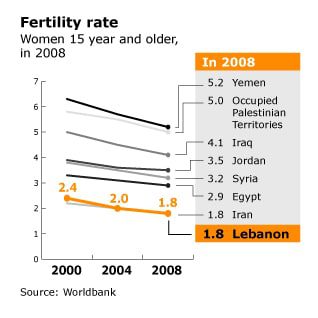
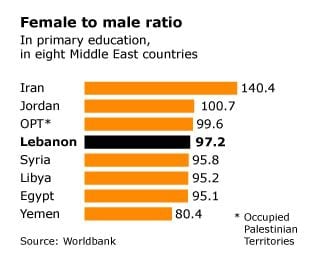
Female representation in Parliament
In 1952, women obtained the right to vote and to be elected. But in politics, they are still a tiny minority. In the previous Parliament, women occupied only 6 seats out of 128. In 2009, their number further decreased: now, there are only four women MPs or 3.1 percent. Thus, Lebanon is at the bottom of the table of parliamentary representation of women in the Middle East (in neighboring Syria it is 12.4 percent). The first time female ministers were appointed was in November 2004. The present cabinet has two female ministers, among whom the Minister of Finance, Raya al-Hassan.
Citizenship and international law
An important issue for Lebanese women is the citizenship and naturalization law of November 1, 1960. This law does not grant citizenship rights to children and spouses of Lebanese women married to non-nationals, in contrast to Lebanese men, who are granted these rights. It was one of the main goals of the UN Development Assistance Framework 2002-2006. Indeed, in March 2006, a draft law that should introduce equality concerning the right to citizenship was submitted to Parliament, but pressing security concerns prevented the MPs from studying this draft law.
Sexual integrity and ‘crimes of honor’
Regarding the Penal Code, those who fight for equal rights consider many of its dispositions discriminatory towards women. Among these articles, one (503-522) relating to the violation of sexual integrity states: ‘If a woman is raped and the perpetrator agrees to marry the victim, he will be pardoned.’ The articles related to ‘crimes of honor’ were amended in 1999. Yet Article 562 still requires mitigation of the penalty for crimes committed in the name of honor.
Education and workforce
Urban women receive a good education in Lebanon. Adult female illiteracy has fallen from 37 percent in 1980 to 19.7 percent in 2000. Illiteracy among young females is a mere 8 percent. Half of all university students are women. But regional differences are important, and illiteracy is still high in North Lebanon and in the southern districts.
Lebanese women make up some 30 percent of the workforce. In 2006, working women were generally better educated than their male counterparts, as better education tends to be a prerequisite for women entering the labor force. Almost a quarter (24.6 percent) of employed women work in the professional sector.
Women have found opportunities in government, medicine, the law, academia, the arts, and business. Most women (81 percent) are employed in the service sector, with 14 percent in industry and 4 percent in agriculture. Few women have achieved senior positions. 90 percent of bank employees are women, but there are no female bank directors.
Lebanon signed the International Labour Organization (ILO) Conventions on Equal Remuneration and on Discrimination in Employment and Occupation in the 1950s. Yet it was only in the years 2000-2002 that labour laws were adapted in order to prohibit gender discrimination by employers. Still, gender equality has not been fully achieved yet in labour laws.

Youth
Youth of Lebanon below the age of 25 years constitute more than half of the population (under 15: 27.3 percent, 15-24: 19.8 percent, data of 2007). The percentages vary per region, from 21.7 percent of 15-24 years old in South Lebanon to 17.4 in Mount Lebanon.
Illiteracy has all but disappeared: only 1.3 percent of the under 25 cannot read or write and today, girls (1.3 percent illiterate) doing better than boys (1.6 percent). Almost half of the under 25 (49 percent) are fluent in at least one foreign language, mostly French (19.3 percent) or English (15.2 percent), with 13.8 percent speaking both. Extremely few (0.5 percent) though, speak another foreign language.

Gross enrolment rates in education are very good (94 percent for primary school, 83 percent for secondary school), particularly in comparison to other Arab countries, but the net enrolment rates (based on the International Standard Classification of Education) are significantly lower (82 and 73 percent, respectively). Still, four out of five complete primary schools.
The proportion of students enrolled in higher education (3283 for every 100,000 inhabitants in 1999, or 48 percent of their age group in 2006) is one of the highest ratios in the Arab world. Gender equity is largely achieved on all levels and types of education except for higher technical education (where females constitute only 39 percent) and in disadvantaged areas.
Health care seems in need of improvement. Slightly more than half (51.5 percent) of the under 25 are covered by medical insurance. Emigration, particularly among the younger generations, is a problem. It soared during the Civil War, but even after the war ended (1990) tens of thousands of mainly young qualified Lebanese continued to leave annually.
This is related to the difficulty of finding (adequate) jobs. The proportion of employed among the 15-24 years old is 31 percent, much lower than that of the overall working-age population (15-64): 51 percent. This may also reflect the high percentage of young people seeking higher education (36 percent of the 15-24 age group go to university or have a university degree). But the proportion of unemployed is also much higher among the younger generations.
The overall unemployment rate is 9.6 percent (7.4 male, 8.0 female), but under 30 we see two-digit unemployment rates, rising as high as 27 percent for the 15-19 age group (see table below). Interestingly enough, university degree holders represent 21.2 percent of the total unemployed, while 27.6 percent of this total attained an elementary level education, and 26.2 percent have an intermediate level education.
Legal System
The Lebanese legal system is based both on traditional law and on European legal systems, in particular the French. Judicial power rests with judicial courts of different degrees and levels of jurisdiction. Magistrates are independent in the exercise of their functions; their decisions and judgments are rendered and executed in the name of the Lebanese people.
Lebanon has no civil code for personal status matters. The religious communities each have their own laws and tribunals for matters such as marriage, dowry, annulment of marriage, divorce, adoption, or inheritance. These laws are binding, whether one is a practicing member of the community or not.
In 2009, a Financing Agreement (10 million EUR) was signed with the EU aiming at consolidating the Rule of Law by supporting the modernization of the Lebanese justice system. It will support the implementation of the Ministry of Justice’s Information Technology Master Plan, improve access to justice and provide specialized training to judiciary staff.
Education
Illiteracy is almost non-existent among the under 25: 1.3 percent, and it is worth noting that girls (0.9 percent illiterate) fare better than boys (1.6 percent). From the age of 35, however, the situation is reversed and between the ages of 40 and 60, illiteracy rates tend to be twice to three times as high among women. Special, often internationally sponsored, programs aim to teach reading and writing to these women.
Among the young generations, gross enrolment rates in education are very high (94 percent for primary school, 83 percent for secondary school), particularly in comparison to other Arab countries, but the net enrolment rates (based on the International Standard Classification of Education) are significantly lower (82 and 73 percent, respectively). Still, 80 percent of children complete primary school.
The proportion of students enrolled in higher education (3283 for every 100,000 inhabitants in 1999, or 48 percent of their age group in 2006) is one of the highest ratios in the Arab world. Gender equity is largely achieved on all levels and types of education except for higher technical education (where females constitute only 39 percent) and in disadvantaged areas.
Health
Life expectancy at birth is 72 (73 for females, 68 for males). Healthy life expectancy at birth is 62 (males 60/females 64). Neonatal mortality rate is 10.8 for 1000 live births, the infant mortality rate is 26 for 1000 live births (female 23, male 28). For children under five the mortality rate is 29/1000 (females 26, males 33). The maternity mortality rate is 83.8 per 100,000 live births.
The probability of dying between the ages of 15 and 60 (per 1000) is 198 for males and 133 for females. For both sexes, the rate is 164. (See World Health Statistics 2009, data from 2007)
The total expenditure on health as percentage of the GDP (2008) is 8.8. In USD, the per capita annual expenditure on health is 516 (2008). Government expenditure on health is 11.7 percent of the total government expenditure and 46.1 percent of the total expenditure on health. The out of pocket expenditure on health is 42.2 percent of the total expenditure on health.

511 cases of tuberculosis were reported (mostly pulmonary tuberculosis) and only 50 cases of HIV were registered in 2006. The WHO notes that hospital-centrism is rather important in Lebanon, which ‘carries a considerable cost in terms of unnecessary medicalization and iatrogenesis, and compromises the human and social dimensions of health.
It also carries an opportunity cost: Lebanon, for example, counts more cardiac surgery units per inhabitant than Germany, but lacks programmes aimed at reducing the risk factors for cardiovascular disease.’ (See World Health Report 2008. Primary Health Care)
Latest Articles
Below are the latest articles by acclaimed journalists and academics concerning the topic ‘Society’ and ‘Lebanon’. These articles are posted in this country file or elsewhere on our website:


